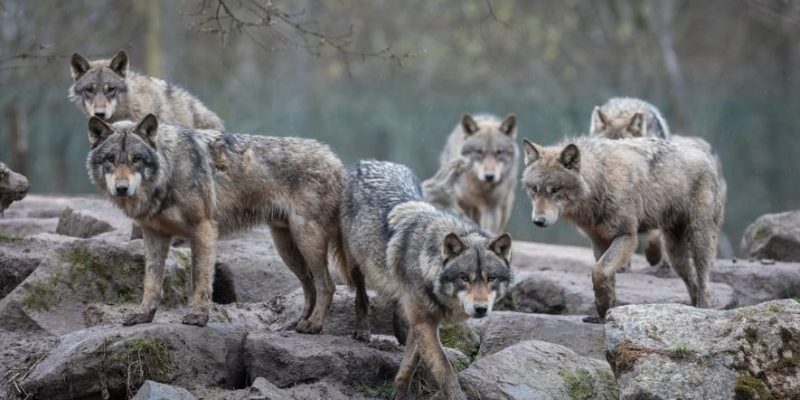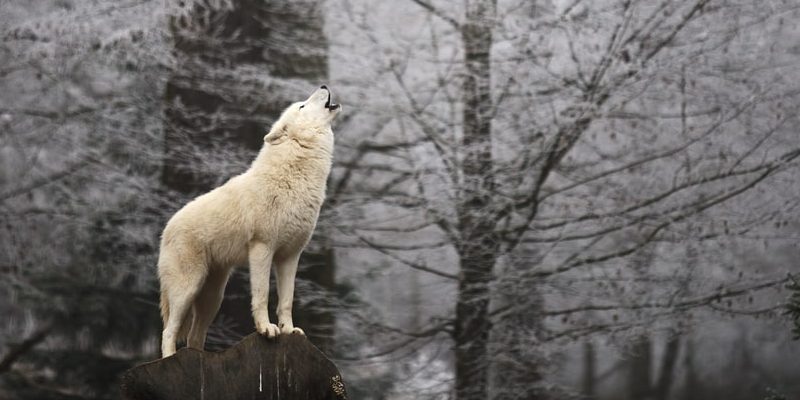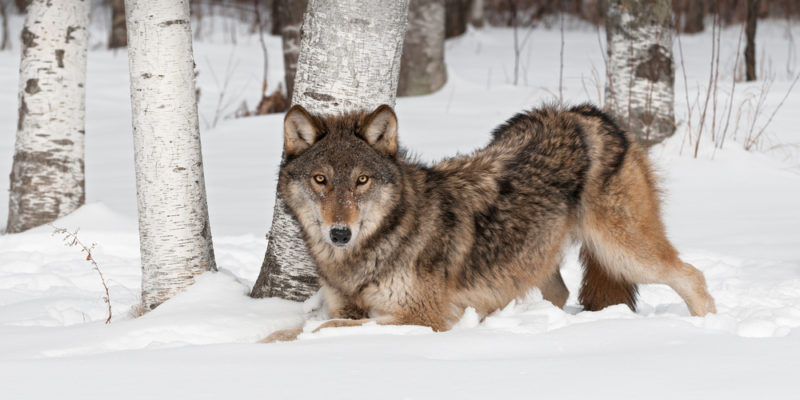We explain what the wolf is, what its anatomy is like and the habitat where it lives. Also, what are its features, playback and more.
What is the wolf?
Wolves are a species of canids, which groups more than 50 subspecies . This great variety of subspecies is due to the fact that their physical characteristics allow them to adapt to various ecosystems and they have spread throughout almost the entire northern hemisphere.
Despite their resemblance and closeness to the dog , wolves are difficult to tame.
These are mammals that live in herds and maintain a hierarchical social structure, although some individuals can live alone.
They are great hunters thanks to the sharpness of their senses, the strength of their jaws and the speed of their legs.
Despite not having natural predators , many of its subspecies are in danger of extinction due to indiscriminate hunting by man.
Wolf Characteristics :
Physical features

The wolf is a quadrupedal animal that in adulthood measures between 65 and 90 cm high and between 130 and 200 cm long (from the snout to the tip of the tail). The tail is usually the length of a quarter of the body.
Its weight depends on the breed and the availability of food , so it varies between 30 and 80 kg (this figure corresponds to the weight of the heaviest recorded wild wolf, which was hunted in Alaska in 1939). Females usually weigh 20% less than males.
-
Locomotion
These characteristics allow wolves to reach speeds of up to 65 km/h in short pursuits and 10 km/h in trots that can last many hours. When running, they can jump up to five meters long.
Habitat

Wolves are adapted to diverse ecosystems so different species can be found in Europe , Asia and North America . They are found in forested areas but can also survive in a frozen ground ecosystem such as the tundra .
They can move through mountains and plains, but the essential requirement for the survival of wolf groups is to have a large territory that they can dominate , which varies between 33 and 200 km2, depending on the species and the size of the group.
-
Senses
The eyes of the wolves are duplex, that is, they are adapted to both day and night vision . However, at night they lose some of their visual acuity.
Herd behavior

Like many other mammals, the wolf has a gregarious behavior, that is, it lives in packs . In the case of wolves, each pack has a strict social order according to hierarchies in which each individual must fulfill a specific function.
There is a male leader and a female leader , and both control the resources and are followed by the rest of the members of the pack, which usually has between 8 and 20 members.
-
Reproduction
 In general, only male and female leaders can reproduce . In fact, in tightly knit packs, the other females don't even go into heat. For this reason, the males usually go out in search of sexual partners towards other packs.
In general, only male and female leaders can reproduce . In fact, in tightly knit packs, the other females don't even go into heat. For this reason, the males usually go out in search of sexual partners towards other packs.The females come into heat (a period suitable for reproduction) only once a year, for a period of between 5 and 14 days.
The gestation period is only 60 days , although it varies in each species. In each litter, between 5 and 8 cubs can be born, which can be raised by the entire pack or only by the mother.
Fur change

Wolves have two layers of fur:
- Outer layer. Repels water and dirt.
- Inner layer. Dense undercoat, also waterproof, and insulating against the cold.
The color of the wolf's hair varies in each species and in some cases it works as camouflage. For example, the arctic wolf has white fur that allows it to go unnoticed in frozen landscapes.
Sound communication

Wolves communicate through sounds, both howling and barking . Not all the functions of the wolf's howl are known, but it is known that you can use it to know the location of your pack.
Barking can be used to alert of danger , and growling is a means for the alpha male and beta female to order the rest of the pack.
-
Predators
They feed on mammals such as pigs, deer, or sheep , depending on the animals available. They may also hunt rodents or birds , especially if they are outside of a pack.
Body communication

Wolves have a wide variety of gestures to express different moods or relationships with other wolves. For example, to express aggressiveness, not only growls appear, but also the fur stands on end and the teeth are shown.
To show dominance over another wolf, it stands tall, with its ears pricked, and may even stand on its hind legs. On the contrary, you can express submission by lowering your body and pulling your lips and ears back.
The above content published at Collaborative Research Group is for informational and educational purposes only and has been developed by referring to reliable sources and recommendations from experts. We do not have any contact with official entities nor do we intend to replace the information that they emit.
Cultural journalist with great interest in education and technological innovation in the classroom. The future passes through technology and it is already here. .
Leave a reply
Your email address will not be published. Required fields are marked *Recent post

Sport: What Is It, Types, Risks, Features, Characteristics and Examples

Dogs: Emergence, Features, Characteristics, Feeding and Breeds

Story: Definition, Elements, Structure, Features and Characteristics

